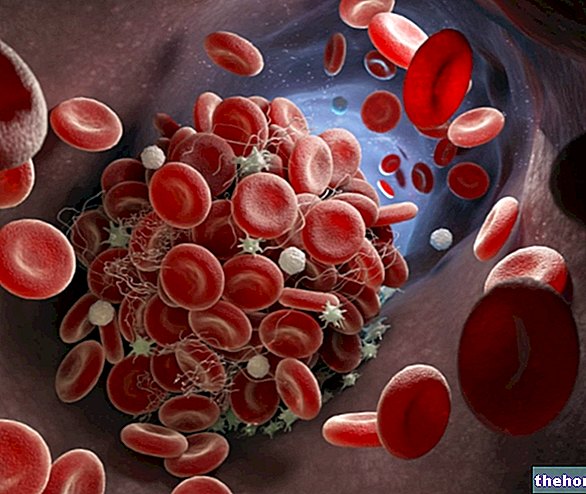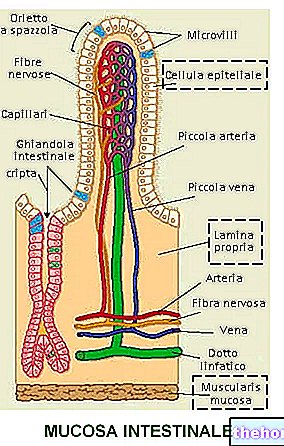The respiratory quotient is a very useful parameter for evaluating the metabolic mixture used at rest or during physical exercise. Due to the chemical differences that characterize them, the complete metabolization of fats, proteins and carbohydrates requires different amounts of oxygen. Consequently, the type of oxidized energy substrate will also affect the amount of carbon dioxide produced.

QR = CO2 produced / O2 consumed
Considering that each macronutrient has a specific QR, by evaluating this parameter it is possible to trace the mixture of nutrients metabolized at rest or during a specific work activity.
Respiratory quotient of carbohydrates
The generic molecular formula of a carbohydrate is Cn (H2O) n. It follows that within a carbohydrate molecule the proportion between the number of hydrogen atoms and those of oxygen is fixed and equal to 2: 1. To oxidize a generic hexose (carbohydrate with six carbon atoms such as glucose) it will therefore be necessary six oxygen molecules, resulting in the formation of 6 carbon dioxide molecules (C6H1206 + 602 → 6H20 + 6C02).
The respiratory quotient of carbohydrates will therefore be equal to: 6CO2 / 6O2 = 1.00
Respiratory ratio of lipids
Lipids are distinguished from carbohydrates by the lower oxygen content in proportion to the number of hydrogen atoms. Consequently, their oxidation requires a higher quantity of oxygen.
Taking palmitic acid as an example, we discover that during its oxidation 16 molecules of carbon dioxide and water are formed for 23 oxygen molecules consumed. C16H32O2 + 23 O2 → 16 CO2 + 16 H2O
The respiratory quotient will therefore be equal to: 16 CO2 / 23 O2 = 0.696
Normally a respiratory quotient of 0.7 is attributed to lipids, bearing in mind that this value fluctuates from 0.69 to 0.73 in relation to the length of the carbon chain that characterizes the fatty acid.
Respiratory quotient of proteins
The main difference that distinguishes proteins from fats and carbohydrates is the presence of nitrogen atoms. Due to this chemical difference, the protein molecules follow a particular metabolic path. The liver must first eliminate nitrogen through a process called deamination. Only then can the remaining part of the amino acid molecule (called the keto acid) be oxidized to carbon dioxide and water.
Like lipids, keto acids are relatively oxygen-poor. Their oxidation will therefore lead to the formation of a quantity of carbon dioxide lower than that of consumed oxygen.
Albumin, the most abundant protein in plasma, oxidizes according to the following reaction:
C72H112N2O22S + 77O2 → 63CO2 + 38 H2O + SO3 + 9 CO (NH2) 2
The respiratory quotient will therefore be equal to: 63 CO2 / 77 O2 = 0.818
The QR of proteins is fixed, by convention, at 0.82.
Meaning of the respiratory quotient
To satisfy the energy demands of the organism, each of us uses different metabolic mixtures in relation to physical effort. The more intense this is, the greater the percentage of oxidized glucose. Much of the energy produced at rest derives from the metabolization of acids. fat. For this reason it is reasonable to expect a respiratory quotient close to 0.7 at rest and higher during strenuous exercise.
Performing activities ranging from absolute rest to light aerobic exercise, the respiratory quotient is around 0.82 ± 4%. This datum, obtained experimentally, testifies to the oxidation by the organism of a mixture composed of 60% of fats and 40% carbohydrates (in conditions of rest or moderate physical activity the energy role of proteins is negligible, therefore we speak of non-protein respiratory quotient).
Each QR value corresponds to a caloric equivalent of oxygen which represents the number of calories released per liter of O2. Thanks to this data it is possible to trace very precisely the energy expenditure of a work activity. Let's assume that during a moderate aerobic exercise the respiratory quotient, measured through the gas analysis, is equal to 0.86; consulting a specific table we obtain that the energy equivalent per liter of oxygen consumed is 4.875 Kcal. At this point to find out the energy expenditure of exercise it will be sufficient to multiply the liters of oxygen consumed by 4.875.
During intense physical exertion the situation changes radically and the respiratory quotient undergoes great variations. Due to the massive production of lactic acid, numerous auxiliary metabolic mechanisms are activated, such as buffer systems and hyperventilation. In both cases there is an increase in the elimination of CO2, independent of the oxidation of the energy substrates. to the numerator (CO2) and keeping the denominator constant (O2) the respiratory quotient undergoes a surge reaching values higher than one.
During the recovery after an intense activity, when a part of carbon dioxide is used to reform the bicarbonate reserves, the respiratory quotient falls below the limit value 0.70.
It is therefore clear that in such situations the respiratory quotient does not exactly reflect what happens at the cellular level during the oxidation of energy substrates. In these cases, the physiologists of respiration prefer to speak of the external respiratory quotient or the relationship between respiratory exchanges (R).









.jpg)


















